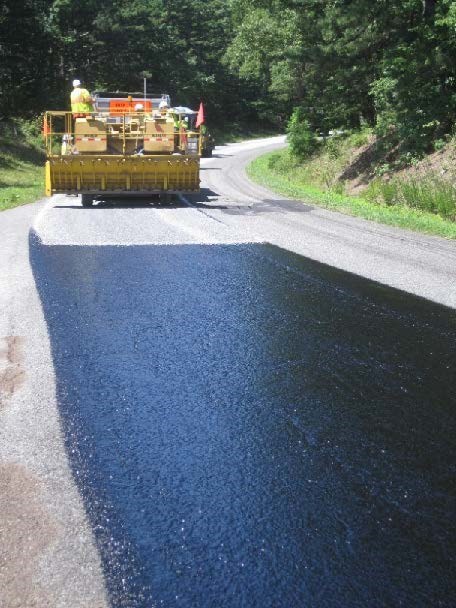
Funding for road systems in national parks comes from national gas tax dollars through the Federal Lands Transportation Program (FLTP). The Parkway receives approximately $7 to $10 million per year for paving, bridge, and tunnel repair projects. However, the parkway has $462 million in deferred maintenance costs. Approximately 90% of these costs are due to maintenance needed on paved roads in the park. To stretch our funding further, national parks throughout the country, including the Blue Ridge Parkway, have identified road sections eligible for a preventative maintenance known as pavement preservation. Pavement preservation applies a new surface to road sections that are in good condition. This helps slow deterioration and allows road maintenance budgets to go further.
In 2017, more than seventy miles of the parkway in Virginia were treated with a chip and fog seal treatment as part of the pavement preservation program. This year, approximately 65 miles in North Carolina are scheduled for chip and fog seal treatments from May-September of 2018:
Other sections that are not suitable for pavement preservation will be prioritized and targeted for full repaving as funds allow. What to Expect
|
Last updated: May 14, 2018
